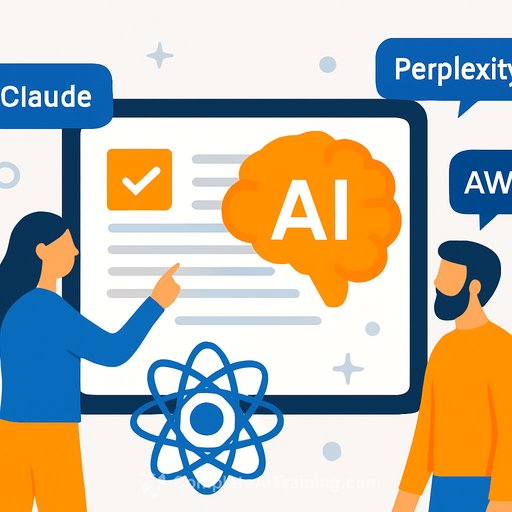Wiley launches AI-native gateway to put validated literature into your AI workflows
Updated 02:00 EDT / October 14, 2025
Wiley announced the Wiley AI Gateway, a single endpoint that pipes peer-reviewed articles and research data into popular AI tools. It integrates trusted scholarly content with platforms such as Anthropic's Claude, Mistral's Le Chat, Perplexity, and the AWS Marketplace.
The goal is simple: reduce the distance between a research question and a sourced, citable answer. AI usage among researchers jumped from 57% to 84% in one year, and this move meets that demand where work already happens.
What the Wiley AI Gateway does
The gateway converts research and expert content into AI-optimized formats while preserving citations, context, and peer-review validation. It consolidates articles and data subscriptions behind one access layer, so literature reviews, statistical analysis, and code generation happen inside your preferred AI environment.
"As AI adoption among researchers surged from 57% to 84% in just one year, we recognized the need to meet them where they work - creating infrastructure that ensures AI-powered research is grounded in validated scholarly sources," said Jay Flynn, executive vice president and general manager, research and learning at Wiley.
Who benefits
- Academic researchers and lab groups running systematic reviews, meta-analyses, and method exploration
- Corporate R&D teams accelerating literature scanning and experiment planning
- AI engineers and data scientists building agents that must cite peer-reviewed sources
"Researchers can now seamlessly combine trusted scientific literature with Claude's analytical capabilities - from statistical analysis to code generation - unlocking entirely new research workflows while maintaining the rigorous standards that scientific discovery demands," said Lauren Collett, who leads higher education partnerships at Anthropic.
Publisher network and coverage
Sage Publications and the American Society for Microbiology are joining the network, with additional publishers set to participate. Broader publisher participation means better coverage across disciplines, fewer gaps in literature discovery, and clearer rights-managed access.
Live initiatives
The gateway already supports major efforts, including the European Space Agency's Phi-Lab, which is integrating scholarly content into the Earth Virtual Expert assistant for Earth observation research. Learn more about Phi-Lab's focus on space and EO innovation at ESA Phi-Lab.
Wiley also collaborated with AWS to launch a generative AI agent for scientific literature search, providing sourced summaries and links back to the original papers.
How it connects: Model Context Protocol
Access is available through the Model Context Protocol (MCP), a standard for connecting AI models to third-party data and tools. For developers, this means faster integration and consistent retrieval with accurate citations across model providers. See the specification at Model Context Protocol.
Practical actions for research leaders
- Identify 3-5 high-value use cases (systematic review, methods comparison, assay design notes, code scaffolding, or data extraction).
- Set up MCP-based access and define which models and tools each team will use (e.g., Claude for analysis, Le Chat for exploration).
- Establish citation requirements: every claim must include a source, DOI, and quote/span-level support when possible.
- Create evaluation sets: benchmark output quality against known literature and require reproducible prompts and seeds.
- Integrate with lab notebooks and reference managers to keep provenance intact.
- Define access controls by publisher license, project, and role; log all queries for audit and compliance.
- Track ROI: time-to-insight, review throughput, and error rate vs. traditional search and reading.
Governance and risk notes
- Licensing: confirm entitlements for each publisher and team; document use policies inside your prompts and tools.
- Quality: insist on verifiable citations; evaluate summarization drift and ensure quoted passages are accurate.
- Security: manage PII and sensitive project data; restrict export where necessary.
- Reproducibility: store prompts, model versions, and tool configs with outputs.
What this means for your workflow
Literature review becomes query, verify, and apply - inside the same interface you use for analysis and coding. With citations preserved and publishers participating, the path from question to defensible, citable output is shorter and clearer.
Next steps
- Pilot the gateway on one active project with clear success criteria (e.g., reduce review time by 30%).
- Codify prompt templates for literature triage, methods comparison, and figure/table extraction with mandatory citations.
- Train your team on AI research workflows and compliance guardrails.
If you need structured upskilling for research teams working with Claude and literature workflows, explore our AI courses by job.
Your membership also unlocks:






